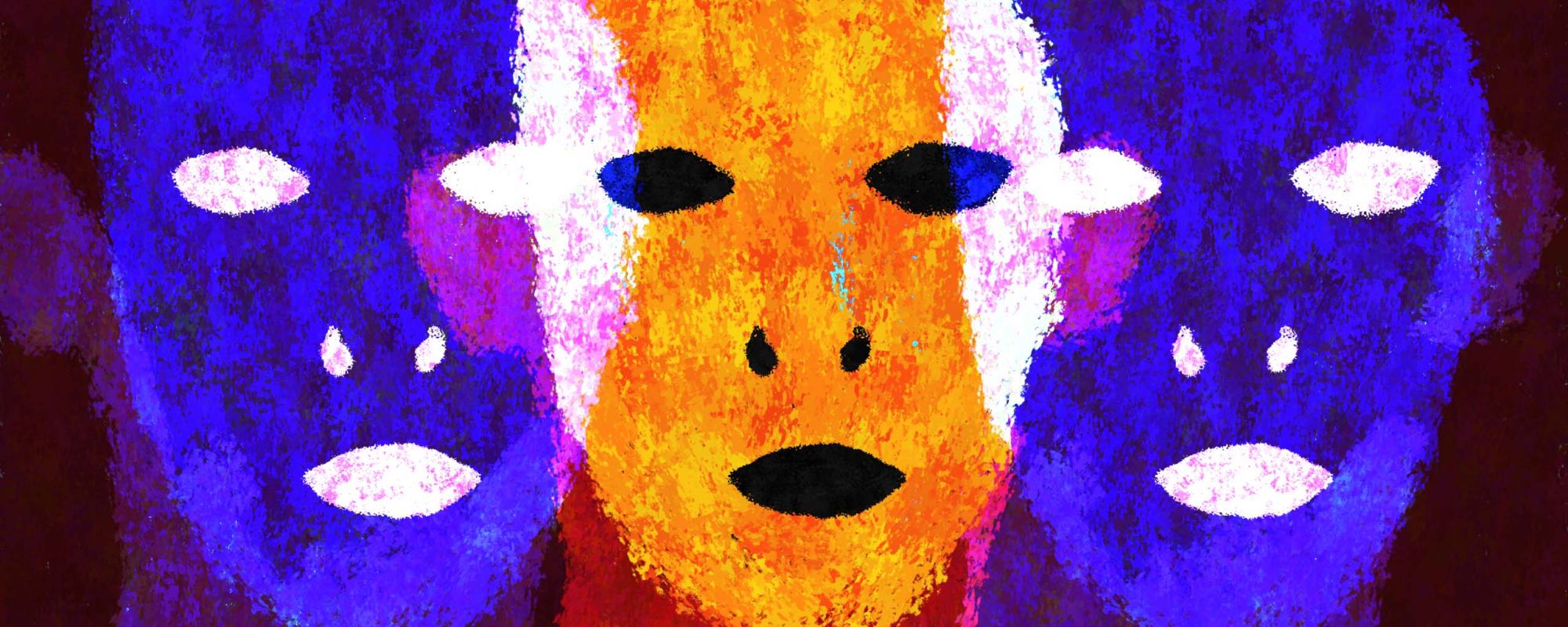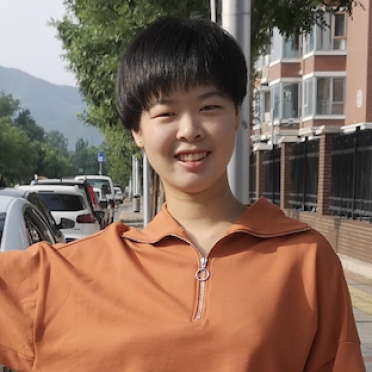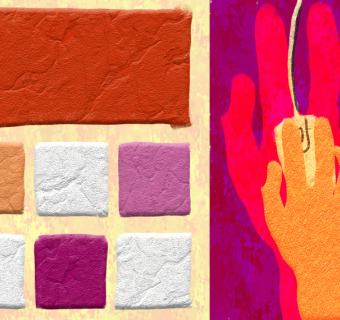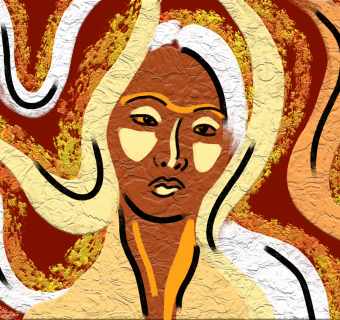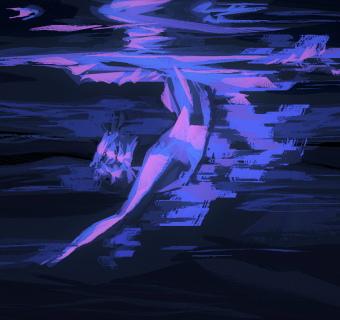Cavarero argues that we are beings who are, of necessity, exposed to one another in our vulnerability and singularity, and that our political situation consists in part in learning how best to handle—and to honor—this constant and necessary exposure.
——Judith Butler, Giving an Account of Oneself
Sand
I was lying flat on my back. My friends were laughing as they shoveled sand onto my body. I gradually panicked and tried to tell them to stop burying me, and that I could hardly breathe. But my mouth was filled with sand, so no words could come out.
I closed my eyes and felt my thighs, my arms, then my stomach, my chest, then my forehead, my nose, my lips, my neck, my fingers, my toes were buried in the solid sands, little by little.
My eyes were still closed.
The sea breeze was cool and had a damp scent; the waves came up and went down; the sand that buried me was gritty, salty, and heavy.
My friends had left. The night had fallen.
No more strength; no more delusions of lifting the solid, thick layers of sand, or struggling to be freed from the reality that had buried me. I was at peace with everything...
I indulged in a cozy feeling of indolence, and became too indolent to get up, too indolent to even move. I transitioned smoothly—I was no longer a youthful human being, but a sluggish, old one. No more strength; no more delusions of lifting the solid, thick layers of sand, or struggling to be freed from the reality that had buried me. I was at peace with everything, like lots of old people in their twilight years.
Two faces, young and old, switched in front of me: one then the other, one then the other. I saw the waves washing my body into the sea. The mud that wrapped around me became thicker and harder, as if a dense layer of shells, in the shape of a real person. I kept on sinking toward the bottom of the sea: endlessly. And the sea squeezed me, pressing me tighter and tighter until I felt myself finally become a thin layer of something, bared out of that heavy body I had.
Strangely enough: after this, the body began to float up to the surface. The color of the mud was gradually washed away, revealing the flesh the color of a rosy newborn baby.
And then the body came ashore, replacing the real me—the one who had turned into a thin layer—and continuing to live.
Face
I am a creature who bears on my own face.
A face is a strange thing: I have a face, which I cannot choose but expose. Showing a face and looking at a face are almost imperatives. Yet at the same time, while I can see my hands and arms and legs, I cannot see my own face without mirrors or other mediated tools. In this sense, my face is strange to me.
I cannot choose but bear it, or I cannot choose but wear my face with me, as always.
A face is not concealed somewhere inside me, like my liver or heart; it is not exterior to me either. It is a thing that I cannot see but others are constantly seeing. I cannot choose but bear it, or I cannot choose but wear my face with me, as always.
I am not—and I could not be—transparent, even to myself. A face under a face. A face under a face.
Shadow
I am a creature who bears on my own face. There are layers of faces like there are layers of representations. They surround me like my clothes surround my body. I wear my face like I wear clothes.
When I have conversations with another person, I gaze at the other’s face. There are times I feel one’s face is very soft, like sands dispersed under the waves of the sea. There are other times when I feel the other’s face is hard and heavy, covered by solid, thick layers of sand or even mud, buried under the heavy weight of representations.
I see shadows of others as well as shadows of myself. These are very deep shadows, like what you would see under very bright, blazing, and dazzling sunlight. You cannot possibly see people for who they truly are. You can hardly even see them, but only their shadows.
But sometimes as a conversation goes on, I feel that the shadow becomes lighter and lighter, to some point it even becomes transparent, as a light breeze passes by in autumn. While I said this, my friend questioned: how do we see someone for who they truly are, as opposed to seeing their shadows? And is it possible in the first place?
I couldn’t help but wonder about that, too. I don’t really know the answer. The shadow-person thing I described above reminds me of Plato’s “Allegory of Cave.” Where he says, we are all chained together in a cave, and seeing shadows of things instead of the things themselves, while believing that the shadows we see are real beings. I see interactions among people in a similar light: our interactions are mostly reactive at first, where we take ourselves as anchors to understand and remember the other—“I think friendship is this and that, they don’t; I am a trusting person and the same for them.” We see the other as we see illusions imposed on deep shadows, staring at an imagining, or even our own reflections. But when one accepts the other for who they truly are, one starts to have an understanding that is almost in the same shape as love.
But when one accepts the other for who they truly are, one starts to have an understanding that is almost in the same shape as love.
I then wonder what one’s identity means for oneself and another. What is this “truly”? Is there a “true” self or authentic self? What does “authenticity/truth” even mean?
I don’t feel that people would have an unchanging, authentic self. When we interact with others, even if we resist changes from and for others, we are still, almost inevitably, affecting and being affected. Changes are not necessarily good but sometimes are also not bad. I think while accepting the person as who they truly are is possible, this does not mean that what we accept is an unchanging, fixed being. The selves—ourselves and themselves—are constantly transforming, changing, sometimes being distorted, and other times being created and added richer meaning through relations with others.

